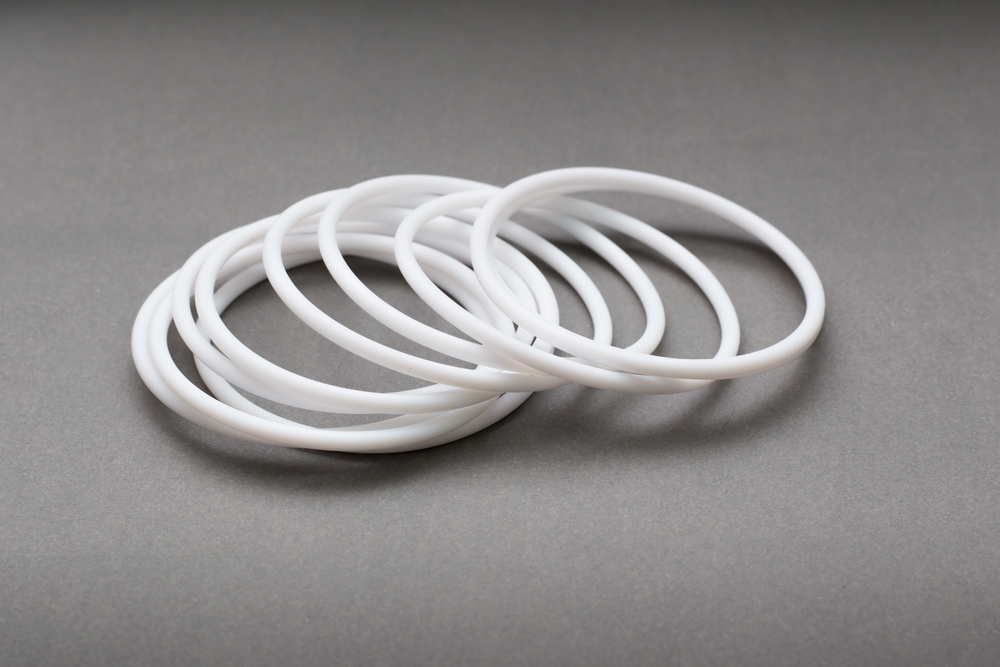
Why PTFE Is a Go-To Material for Hydraulic Seals and Gaskets
Polytetrafluoroethylene (PTFE), widely recognized under the brand name Teflon®, has become one of the most relied-upon materials in industrial sealing applications. From aerospace engineering to medical devices, PTFE exhibits a range of performance characteristics that make it ideal for components like hydraulic seals and gaskets. But when it comes to the realm of fluid power systems—especially hydraulic applications—PTFE emerges as a top-tier performer. Understanding the specific advantages of PTFE hydraulic seals can help engineers, designers, and maintenance teams optimize system reliability, longevity, and efficiency.
Hydraulic seals and gaskets serve as the backbone of pressure containment systems. Their role is essential in preventing leaks, maintaining pressure, and ensuring that contaminants do not enter the hydraulic circuit. Therefore, the selection of material for these components is more than a mere design choice—it directly influences operational integrity and safety. This blog delves into the reasons why use PTFE in seals, particularly hydraulic seals and gaskets, has become standard practice across demanding industries.
Unmatched Chemical and Thermal Resistance
One of the core reasons PTFE hydraulic seals are highly favored is due to their exceptional resistance to chemical attack and temperature extremes. Hydraulic systems often operate in environments where exposure to aggressive fluids—like hydraulic oils, synthetic lubricants, or even acids and bases—is common. PTFE’s non-reactive molecular structure provides a virtually universal chemical resistance, allowing it to function effectively in diverse and chemically harsh settings.
In terms of thermal stability, PTFE can withstand continuous exposure to temperatures ranging from -200°C to +260°C without losing its mechanical integrity. This makes it uniquely suited for both cryogenic and high-temperature hydraulic applications. Traditional elastomers, like nitrile or Viton, may degrade or lose elasticity under such conditions. In contrast, PTFE remains dimensionally stable and resists embrittlement, ensuring the seal or gasket performs consistently over its entire service life.
Furthermore, PTFE does not degrade under prolonged exposure to UV radiation or weathering. This enhances its viability for outdoor or aerospace hydraulic systems that are subjected to extreme temperature cycles and environmental fluctuations. This resilience is particularly critical in applications where regular maintenance is either impractical or costly, making long-lasting seals a necessity.
Low Friction and Excellent Wear Resistance
Another compelling advantage of PTFE in hydraulic sealing applications is its inherently low coefficient of friction. This feature significantly reduces the wear and tear on both the seal itself and the dynamic mating surfaces it contacts, such as shafts or cylinders. In high-pressure hydraulic systems, minimizing friction is critical to maintaining energy efficiency and extending the operational lifespan of moving parts.
PTFE’s low-friction property is particularly valuable in dynamic sealing environments where reciprocating or rotary motion is involved. It not only prevents stick-slip behavior but also allows for smoother operation at lower starting torques. This becomes essential in precision machinery, robotics, and aerospace actuators, where even the slightest resistance can impact performance.
In addition to its low friction, PTFE offers exceptional wear resistance, especially when modified with fillers like glass fiber, carbon, or bronze. These additives enhance PTFE’s mechanical properties, making it suitable for high-load and high-speed applications without compromising its chemical or thermal advantages. For instance, carbon-filled PTFE exhibits improved compressive strength and conductivity, making it a great choice for electrically sensitive hydraulic systems.
Importantly, these wear-resistant properties reduce the frequency of seal replacement and system downtime, contributing to lower total ownership costs. By employing PTFE hydraulic seals, companies can achieve longer maintenance intervals and fewer system failures, leading to higher overall productivity and operational efficiency.
Compatibility with a Wide Range of Hydraulic Fluids
Hydraulic systems are designed around a variety of fluid types—mineral oils, synthetic blends, water-glycol mixtures, and fire-resistant fluids, to name a few. The compatibility of the sealing material with these fluids is crucial to ensuring long-term reliability. One of the standout reasons why use PTFE in seals is its unparalleled inertness, which makes it compatible with almost all known hydraulic fluids.
Unlike rubber-based seals that may swell, crack, or degrade when exposed to certain fluid chemistries, PTFE remains structurally stable and unreactive. This reduces the likelihood of seal failure due to chemical incompatibility, a common issue that leads to leakage, contamination, or system inefficiencies. The result is a versatile sealing solution that can be deployed across different fluid systems without the need for material swaps or redesigns.
Additionally, PTFE’s low water absorption rate ensures that it retains its properties even in high-humidity environments or when exposed to water-based hydraulic fluids. This quality is particularly beneficial in marine and offshore applications, where exposure to moisture is unavoidable. The use of PTFE hydraulic seals in such conditions guarantees consistent performance without the risk of material degradation.
PTFE’s neutrality also means it does not support microbial growth, making it suitable for pharmaceutical and food-grade hydraulic systems, where cleanliness and contamination prevention are paramount. Its broad fluid compatibility simplifies inventory management for OEMs and MROs, as one PTFE seal design can be used across multiple system configurations with minimal adjustments.
High Load-Bearing Capacity and Dimensional Stability
Hydraulic systems frequently operate under high pressure, often exceeding several thousand PSI. This creates enormous mechanical stress on sealing components. Materials used in such systems must offer high load-bearing capacity and minimal deformation to maintain a tight seal. PTFE excels in both respects.
Thanks to its high compressive strength, PTFE can absorb significant radial and axial loads without permanent deformation. This allows it to maintain sealing effectiveness even when subjected to pulsating or fluctuating pressures. Moreover, its excellent creep resistance—especially when reinforced with fillers—prevents seal extrusion and blowout, common failure modes in high-pressure environments.
PTFE also exhibits outstanding dimensional stability across temperature and pressure variations. It does not undergo significant thermal expansion, and its resistance to cold flow ensures that the seal retains its shape and performance characteristics over time. This stability is critical in precision hydraulic systems where tight tolerances and exact alignment are necessary to avoid leakage or system malfunction.
In applications like hydraulic cylinders, valves, and pumps, PTFE seals can be designed with backup rings or anti-extrusion devices to further enhance performance. These configurations ensure that the seal remains in place and continues to perform reliably, even under extreme operating conditions.
Design Flexibility and Manufacturing Versatility
PTFE offers remarkable versatility in manufacturing, which allows engineers to tailor hydraulic seal designs to meet highly specific operational requirements. Unlike some rubber elastomers that are limited in form factor, PTFE can be machined into complex geometries with precision tolerances. This opens up a wide array of possibilities in custom seal design.
For instance, PTFE can be used to produce lip seals, piston seals, rotary shaft seals, and gasket configurations with intricate cross-sections. The ability to fine-tune seal profiles enables better control over performance factors like compression set, contact pressure, and fluid retention. Additionally, PTFE can be bonded with elastomeric materials to create composite seals that offer the best of both worlds—chemical and thermal resilience from PTFE, and flexibility from rubber components.
Moreover, the manufacturing process of PTFE allows for the inclusion of performance-enhancing fillers during the compounding stage. Engineers can select from a range of fillers to achieve the desired balance of hardness, thermal conductivity, electrical insulation, and wear resistance. This level of customization ensures that the seal material is perfectly suited to the specific demands of the hydraulic system in question.
PTFE’s machinability also contributes to rapid prototyping and low-volume production, which are advantageous for specialized applications in aerospace, defense, and medical equipment. These industries often require high-performance seals in small batches, where PTFE’s adaptability proves invaluable.
Conclusion
PTFE stands out as an indispensable material for hydraulic seals and gaskets due to its unique combination of chemical resistance, thermal stability, low friction, fluid compatibility, and mechanical robustness. Whether in static gaskets or dynamic seals, PTFE ensures long-term performance, reduced maintenance, and enhanced safety, making it the material of choice for engineers across industries. As hydraulic systems continue to evolve in complexity and performance demands, the role of advanced materials like PTFE becomes even more critical in achieving operational excellence.
Royal Brass Incorporated
Welcome Royal Brass Incorporated! We are your 3rd generation, family-owned, local hose supplier! Our family has dedicated our services to supplying northern California with all types of hoses, fittings, flanges, regulators, valves, adapters, and gauges. We pride ourselves on having the most extensive inventory in northern California. Our inventory ensures that we can fix most products on site, the same day. Here at Royal Brass Incorporated, we only hire qualified individuals who are trained in factory sales. Our fully stocked warehouses ensure that we can fill your hydraulic and pneumatic hose, tubing, and fitting needs on time, every time. High-quality customer service is our goal and has been since 1952. Stop by or contact us today!
Categorised in: PFA & PTFE Products





